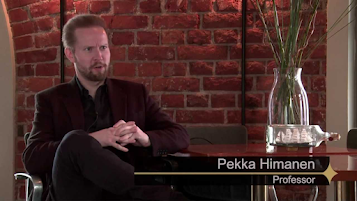Analysis of the Types of Copyleft (Week 6)
Most
people who spent their time on open-source projects are familiar with the term
“copyleft”. This term itself is widely used in many areas; however, some people
may not understand what it is. The word copyleft was firstly used in Li-Chen
Wang’s Tiny BASIC program in 1976
1. Strong
Copyleft
The strong copyleft sets rules such that when the
software includes some of the codes in the work of the previous author, then
the derived work itself must be released under the same license
[source:
https://www.whitesourcesoftware.com/resources/blog/open-source-copyleft-licenses]
2. Weak
Copyleft
On the other hand, weak copyleft is referred to licenses
where only the original applicant for the license holds copyleft status the
implication of which mean that contributors to the code or those who borrow the
code are free to apply any sort of license on the newly created software and is
not subject to the same conditions as the original work. This copyleft type may
have effects like “productizing” the original code by adding new codes that
will be enclosed and later sold as proprietary software
3. No
Copyleft
No copyleft gives the developers the biggest independence
to modify the code as they like and later even release it as proprietary
software. This option may also help developers to choose the freedom they want
to give to the end-users of their products. Furthermore, this feature can be
advantageous to the people who want to start their project based on
non-copyleft products.
Conclusion
In conclusion, I have analyzed all three types of
copyleft licenses and the ways in which they can impact the projects. The
essence of the practice of copylefting is in the spirit of cooperation and
collaboration amongst like-minded cyber/computer professionals and/or
enthusiasts who understand the importance of cumulative work.
References
|
[1] |
"Copyleft: The
rise of open-source software licensing," Snyk, [Online]. Available:
https://snyk.io/learn/what-is-copyleft-license/. [Accessed 11 February
2022]. |
|
[2] |
"What is
Copyleft?," GNU Operating System, [Online]. Available:
https://www.gnu.org/copyleft/. [Accessed 11 February 2022]. |
|
[3] |
Copyleft, [Online].
Available: https://copyleft.org/. [Accessed 11 February 2022]. |
|
[4] |
R. Wilson,
"What Kind Of Licence Should I Choose?," OssWatch, [Online].
Available:
http://oss-watch.ac.uk/resources/licdiff#:~:text=Strong%20copyleft%20conditions%20dictate%20that,the%20code%20will%20be%20available..
[Accessed 11 February 2022]. |



Comments
Post a Comment